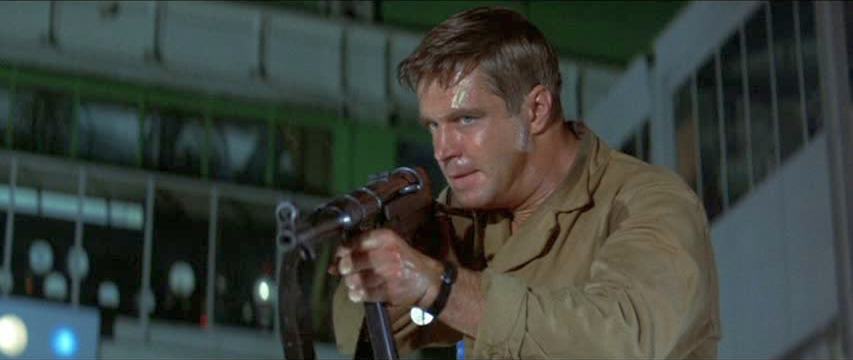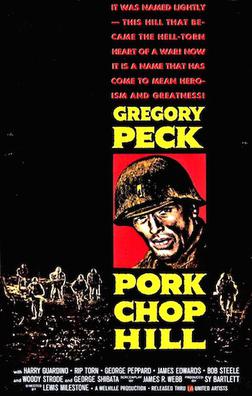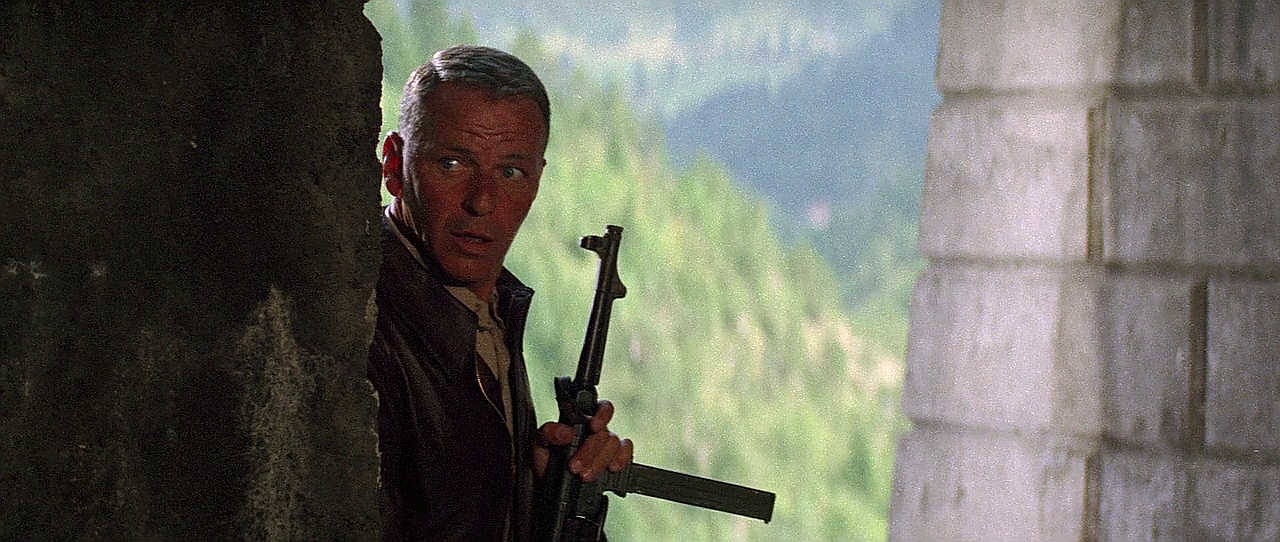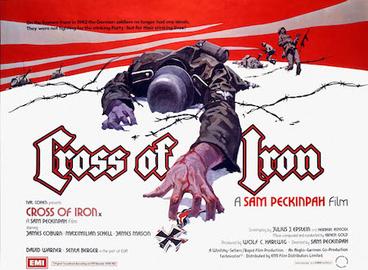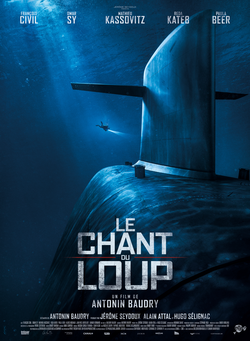This is another in my series informing you about how
war movies differ from their source material.
I also take the liberty of comparing the two. I have a belief that a movie should be better
than the novel it is based on and most war movies are. The screenwriter has the advantage of having
the book as his foundation and he can make improvements to the plot and make it
more entertaining. The disadvantage is
that the movie can not go into the detail that a book can.
I am mainly arguing that movies should be more entertaining than the
novel. If you read on, be aware that I
am assuming two things. One, you have
seen the movie already. Two, you are not
planning on reading the book, so you don’t care about spoilers. I hope what you do care about is how the book
differs from the movie and which is better, in my opinion.
“Cross of Iron” is a war movie directed by Sam
Peckinpah. It is set on the Eastern
Front in WWII. A platoon led by a Sgt.
Steiner (James Coburn) is part of the perimeter defense of a German salient
that is threatened by superior Red Army forces.
Steiner is a great soldier, but is anti-authority and cynical about the
war and the army. His new company
commander Capt. Stransky (Maximilian Schell) has been transferred to Russia so
he can win an Iron Cross. He is a martinet
who realizes Steiner will be a thorn in his side and Stransky is determined to
eliminate Steiner as an obstacle to his medal.
Steiner and his men have to go on a trek behind enemy lines to get back
to their lines after they are left behind in the army’s withdrawal. The movie was based on the novel The
Willing Flesh by Willi Heinrich.
Heinrich served on the Eastern Front and was wounded five times. The screenplay was written by Julius Epstein,
James Hamilton, and Walter Kelley. They
changed the chronology of the book, but adapted some of the key scenes and kept
most of the characters.
The novel opens with Steiner’s platoon in the front
lines of the German perimeter. We are
introduced to his men, who have pretty much the same personalities as in the
movie. For example, Schnurrbart is a
mustachioed rock, Kern is a slacker jerk, Kruger is a slob, Dietz is boyish,
Zoll is a troublemaker (but not the resident Nazi like in the movie). The book has a key character named Dorn who is
an intellectual that Steiner likes to discuss philosophy with. The movie Steiner is more laconic than
philosophical. When the German army
pulls back, Steiner’s group is ordered to stay by his battalion commander
(unlike in the movie where the nefarious Stransky purposely leaves them behind). In the trek back to German lines, Steiner and
crew (they start with eleven men) encounter the Russian female soldiers and the
scene plays out similar to the movie except that at one point Steiner decides
to go off on his own. He changes his
mind and returns after an escaping Russian runs into him. This allows Steiner to avoid the difficult
decision of killing the women to protect their continued journey. Zoll’s rape and death are essentially the
same, but Dietz is not killed until a little later when he runs into a Russian
patrol. Meanwhile, Stransky gets Triebig
to admit he prefers men, but Keppler is not in the room.
When Steiner and the others reach the Russian front
lines, they assault some bunkers with extreme prejudice. They capture a Russian officer and force him
to radio that they are a Russian patrol going out. They proceed into no man’s land and Steiner
goes ahead to identify them and they successfully make it in. Nine of the eleven make it back. Steiner meets Stansky for the first time. He offers to promote him to Sgt., but Steiner
does not react. The conversation enrages
Stransky and it doesn’t help that when he snidely asks if Steiner was an actor
before the war, Steiner responds: “Not
before the war”. (How did that line not
make it into the movie?) Brandt gives
Steiner two weeks R&R. He meets a
nurse who he had an affair with when he was convalescing in a hospital thirteen
months before. It turns out that she had
seduced him and when he dumped her, she framed him for robbery which resulted
in his being put in a penal battalion.
At the rest area, he has an affair with another nurse named Gertrud. Steiner is not a ladies man and the romance
is awkward. While he is gone, Dorn and
Anselm are killed by a random shell.
When he returns, Steiner catches Triebig and Keppler
in bed and beats Triebig up because he had sided with Stransky in the chewing
out of Steiner earlier. The big Russian
attack featuring tanks in the movie occurs at this point. Steiner leads the counterattack with Kruger,
Hollerbach, Kern. and Faber (recruited by Steiner after their return across no
man’s land). The Russians are caught
between two forces and routed. Steiner
is wounded and on the way to the evacuation station, his companion Hollerbach
is run over by a tank. Steiner is away
three months and returns to Schnurrbart, Kruger, Faber, and Maag. He finds out that Stransky is claiming to
have led the counterattack and needs Steiner to sign off on his Iron
Cross. The movie covers the meeting with
the skeptical Brandt, but leaves out a central section where Keisel explains
that Steiner wants time to think on it because Steiner does not want to be a
witness in a court-martial. Keisel
convinces Brandt to drop the matter, but threaten Stransky with consequences if
he doesn’t back off of Steiner. Steiner
has guilt feelings about how he did not appreciate all that Brandt had done for
him, but he did not say he hates all officers, including Brandt.
The big set piece in the book is an attack on a
Russian factory. This is barely
recognizable in the movie in the scene where the Russian tanks break into a
building the platoon had taken refuge in.
Stransky plots with Triebig to kill Steiner in the factory. When Brandt calls to cancel the attack,
Stransky does not pass the word. Steiner
and the men negotiate the maze of corridors in the dark, eliminating the
defenders. Triebig shoots Schnurrbart,
mistaking him for Steiner. Steiner then
insures that Triebig is killed by the Soviets.
Upon returning, Steiner sets up an ambush for Stransky. Brandt is aware, but does nothing to stop
this. Steiner ends up not killing
Stransky and soon after Steiner is wounded by an artillery round and Faber
loses his eyes. At the end of the book,
Stransky is about to be transferred.
Keisel is still with Brandt but he has told him he will be saved to help
start a new Germany. The movie ending is
not even remotely connected to the book.
And since it is a poor ending to a great movie, you have to wonder what
the screenwriters were thinking.
As you can read, the book has more scenes than in the movie. It is unclear why the
screenwriters changed the order of the ones they kept. Subtracting scenes was inevitable, but resequencing
was questionable. The movie jumps immediately into the Steiner/Stransky dynamic
and structures the plot around it. The
book does not really kick into this until midway through, allowing for some
vignettes that develop the whole squad instead of just Steiner. The trek is pushed all the way to the last
third of the book as a way to build to the confrontation between Stransky and
Steiner. The novel is a multi-layered
story of a platoon fighting a losing war whereas the movie is boiled down to a
lost patrol movie with an evil brass cliché.
Steiner completely dominates the movie, but in the book he is the main
character and the rest of the unit get good coverage, too. As you would expect, the novel fleshes out
the characters quite a bit more than the movie.
The movie does borrow the basic personality traits, but the novel
actually puts you into the characters’ heads and Heinrich gives each member of
the platoon a chance to have their moment.
Most importantly, Steiner is a multi-dimensional character, unlike the
simply cynical, laconic movie Steiner.
Heinrich’s Steiner is mercurial.
He even pouts occasionally. He is
quick-tempered and unstable.
Significantly, for those of you who care about motivation, we find out
why Steiner is the way he is. He lost
his fiancé in mountain climbing accident that would scar anyone. There was also that frame-up by the nurse. Another difference between the movie platoon
and the novel platoon is that in the book the men are much more
dysfunctional. They are far from a band
of brothers. Some of them hate each
other and not all are enamored with Steiner, although all recognize that
without him they are doomed.
The movie does retain the Brandt/Keisel dynamic, but
obviously the book includes much more of their interesting discussions. Keisel is one of my favorite fringe
characters in war movies and Brandt is a key figure in the theme that even some
of the German leaders were cynical. It
was certainly unfair when Steiner lumped him in with all officers. At least in the book, Steiner is
remorseful. Keisel is the conscience of
the book (along with Dorn). Keisel
defines courage thus: “In 99 out of
100 cases, courage is nothing more than expression of common politeness or
sense of duty. [The other 1%] is an expression
of insanity.” Keisel gets almost as much
ink as Stransky, since Stransky is a smaller character than in the movie. However, the movie does give us the full
Stransky. By the way, there is no
Russian boy-captive in the book. I would
have to give the movie that one.
I have mentioned that in most cases I believe that
war movies based on novels are better than the novel. However, “Cross of Iron” is not one of those
movies. The main reason why the book is
superior is because it is able to flesh out all the characters. Even the main character is more
multi-dimensional and less mysterious.
Clearly, a book should do this better than any movie, but the main
reason why the movie is inferior is the dubious decisions on changing the
sequence of events in the book’s plot.
It would have been much smarter to use the novel as an outline and then
eliminate scenes due to time pressures.
The movie wisely condenses the theme to glory-hunting (Stransky) versus
cynical survival (Steiner) and focuses on that aspect from the get-go. It is pretty effective in that single-mindedness,
but blows it in the end with the ridiculously unrealistic ending that sees
Steiner abetting Stransky. To have the
officer-hating Steiner kill Triebig for killing his men and then have him spare
the much more odious Stransky is bizarre.
Heinrich’s Steiner also spares Stransky, but in a much more believable
manner. And having Stransky get his
transfer hammers Heinrich’s own cynical attitude toward the war he fought in.
BOOK = A
MOVIE = B+

